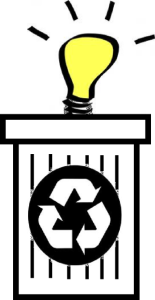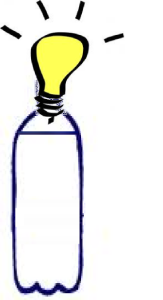Two energy related news items give me hope!
The first is from David Brin’s “Contrary Brin” blog, davidbrin.wordpress.com — his 13 August 2013 entry. The second was shared by Barney Leith on Google+.
Sweden Can’t Get Enough Garbage
You read that right: Sweden is running out of garbage, thanks to highly efficient recycling habits, coupled with the country’s advanced waste-to-energy program.
 The two programs — recycling, plus using garbage as fuel — mean that only four percent of Sweden’s garbage ends up in landfills. In the US, that figure is more than 50 percent!
The two programs — recycling, plus using garbage as fuel — mean that only four percent of Sweden’s garbage ends up in landfills. In the US, that figure is more than 50 percent!
Since the Swedes don’t generate enough garbage to supply all their energy needs, they import garbage from the landfills of other European countries. Now you’d think those other countries would be happy to sell their waste to the Swedes, right?
But it doesn’t work that way. They pay Sweden to take the stuff off their hands. (Of course!) So Sweden makes a profit accepting the landfill overflow, then profits again using it to create energy. Where can I get in on a deal like that one?
Come to think of it, my mom’s parents were Swedish emigrants. Guess that doesn’t quality me for royalty checks — but it does make a fella proud of his heritage.
Skylighting With Water Bottles
According to the BBC, Alfred Moser’s bottle-light invention will be lighting up more than a million homes by early next year. (Too bad Moser himself isn’t making any more money on it than pocket change. Maybe he needs to partner with some Swedes.)
We’re talking about simple houses, with one-layer roofs, in developing countries where electricity is scarce, or power outages common. (Like in Grenada, when Cheri and I lived there from 1989-90. Or southern Brazil, where Moser lives.)
Moser starts with a clear, clean, two-liter plastic bottle. Fills it with water, along with two capfuls of bleach to prevent algae from growing inside.
He then creates a small hole — about the diameter of the bottle — in the roof. He wedges the bottle into the hole (from the bottom), then seals the seam with polyester resin so nary a raindrop ever makes it through.
(Forget the bottle: Where can I get this magic resin? My roofs — one on my house, and one on my camper — both spring leaks that I have a devil of a time sealing. Guess that’s another story.)
 Moser repeats the process as necessary, till the entire roof is dotted with water bottles. These collect, magnify, and focus sunlight, so as to light up the whole building’s interior. The effect — depending on the sun’s brightness that day — is about equal to electrical lighting in the 40-to-60-watt range.
Moser repeats the process as necessary, till the entire roof is dotted with water bottles. These collect, magnify, and focus sunlight, so as to light up the whole building’s interior. The effect — depending on the sun’s brightness that day — is about equal to electrical lighting in the 40-to-60-watt range.
This works only in the daytime, of course. But that’s important in houses that otherwise would be dark during the day. What windows these building have, when they have them at all, typically are not enough, and electrical lighting is expensive.
“There was one man who installed the lights and within a month he had saved enough to pay for the essential things for his child, who was about to be born. Can you imagine?” Moser says.
